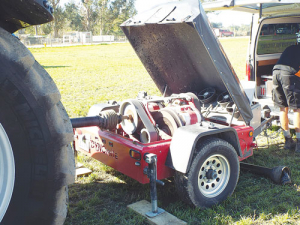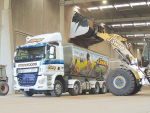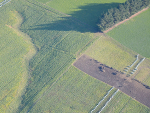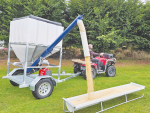Several companies in New Zealand claim to have the answer -- by re-mapping the tractor’s engine control unit (ECU) to deliver more power, while amazingly reducing fuel consumption.
Immediately the old adages ‘all that glistens isn’t gold’ or ‘it seems too good to be true’ spring to mind and indeed are probably true.
If you are considering a re-map of a tractor’s ECU it would be prudent to ask yourself many questions. Does the re-map affect the manufacturer’s warranty? Could it overload engine or transmission components, causing premature wear or ultimately failure? Are there safety implications? Will the modification affect the insurance status of the tractor?
Of course, the answer to each of these questions is: yes.
Understand that manufacturers, particularly engine makers, have made huge strides over the last decade to meet tightening emission regulations, while in most cases reducing fuel consumption, using technologies such as DEF, EGR, DPF and DOC.
In developing tractors, manufacturers strive to deliver the required power and useable torque while considering that today’s tractors must be capable of a wide range of tasks from basic transport duties to power hungry operations like hauling power cultivators or deep rippers.
The simplistic approach to re-mapping ECUs does not take into account that while tractors might have common chassis components and engine blocks, internal or ancillary equipment can be model-specific, as with a cooling package. Increasing power generally means generating more heat, so if the standard cooling package is unable to dissipate this extra heat, the consequences are likely to be premature failure of cylinder head gaskets and/or EGR valves or overload of after-gas treatment systems.
The practice has become such a problem that some manufacturers are asking dealers to send failed engines back to the factory to check for a standard configuration before considering claims for warranty.
The proponents of this type of upgrade also take a rose-tinted-glasses approach when they talk of unlocking the power you have already paid for, the ability to do the same work at lower throttle settings to achieve fuel savings, or pulling wider machines for more output.
In practice, standard tractors are configured to give maximum output in circumstances that allow the tractor to cope with such increases. ‘Power boost’ in most tractors is available for operations such as PTO work or transport operations where, in the case of the latter, increased speeds reduce torque loading on the tractor drivelines, and in doing so allows the manufacturer to offer a comprehensive warranty and peace of mind.
Human nature tells us that when the pressure is on, throttling back is a pipe-dream, particularly with units driven by staff, and upsizing machines to make better use of more power is unlikely due to the large capital cost of high output implements.
Tractor and Machinery Association general manager Ron Gall says apparent gains are largely overridden by the negatives re-mapping creates.
“At a local level, dealers are being called to investigate error messages on dashboards because of this practice,” he told Rural News. “Diagnosis and rectification can take many hours, falls outside the remit of warranty and generates invoices which, we suggest, should be passed to the re-mappers.”
Gall says some companies are also offering to upgrade transmission controllers, which sees tractors configured for 40km/h, risking premature failure or, more worrying, the likelihood of accidents.
The rule must be, buy the right tractor for the job, as the alternative, by way of a ‘cheap’ upgrade, is likely to cost more over the long term.









